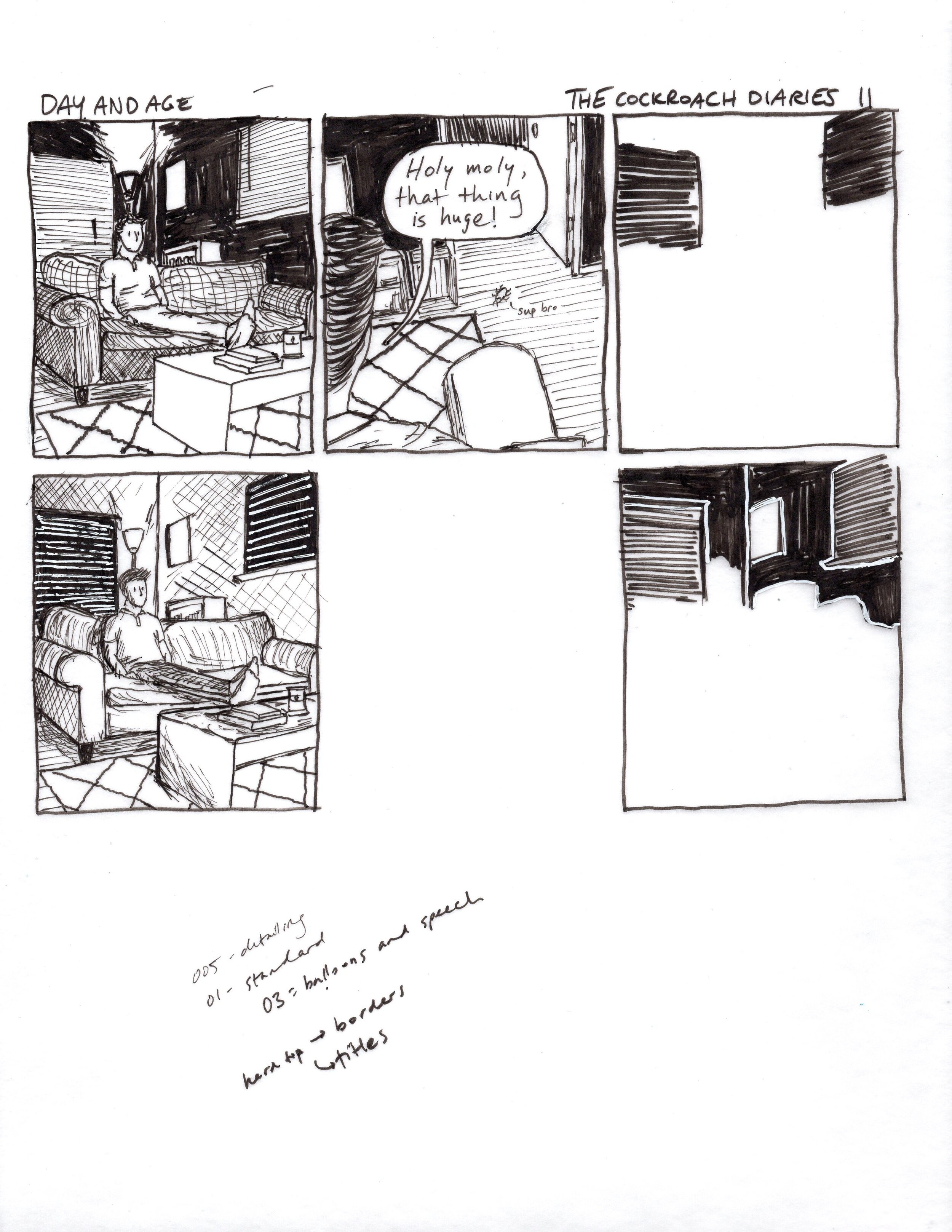I finally made the jump.
My first doodles in pen
Full credit to my friend Danny who planted the seed by gifting me two Tombow calligraphy pens for my birthday. At the time, I was resolute in my allegiance to graphite and apprehensive of bringing ink into the fold. For about a month, the pens sat untouched in their original packaging, subtly taunting me. On a whim, I ripped apart the plastic and cardboard, and just started messing around. Almost instantly, I was won over. Text popped, panel borders felt more solid, and lines possessed an ineffable flow. Why hadn’t I done this sooner?
While the aesthetic characteristics of the pen strokes definitely looked better on paper (pun intended), they didn’t allay many of my practical concerns. I would have to relearn and experiment with making shapes and shading. One of the reasons I enjoyed using pencil was the tangible, gritty appearance it gave. I am an amateur illustrator and I want it to show. I want my comics to feel like you could hold it in your hands and feel the paper it was drawn on. Pencil was great at that because there was a considerable gradient to the strokes it could produce. You could cross-hatch or shade something completely in, and could get different results depending on how heavily you pressed. Plus, stray lines and blemishes can be kept in and still feel connected to the overall image. With ink, it’s all or nothing. It’s either black from the ink or white from the paper, and nothing in between. I can no longer use a kneaded eraser to lighten up an area that’s a little too dark. If it’s inked in, there’s only one shade it can be. You can still create the appearance of varying light levels, but it takes a different approach. Even then, I was worried that the smooth dark lines produced by a pen wouldn’t possess the unrefined, DIY feel of pencil. And on top of all that, ink is permanent. Yes, there’s white-out and things can be touched up digitally, but you still have to get most of the image down just right. So yeah, I still had concerns.
Sketch of D&A #12 using all my new gadgets
I used tracing paper to copy these two backgrounds
Experimenting with shading in ink
Once again, it was Danny to the rescue. Following his advice, I added tracing paper and carbon transfer paper to my arsenal. Like the pens, it took some playing around and experimenting to find the best way to incorporate these new tools into my work flow. And I still haven’t perfected it! Just a couple weeks after inking D&A 11, I’m already planning to adjust my process again. Tracing paper has returned some leeway that was lost when erasers became unviable. I can create preliminary sketches and easily trace a cleaner version onto another paper. The transfer paper has allowed me to keep nearly all of the illustration process physical instead of deferring certain parts to GIMP. In tandem with tracing paper, I can duplicate backgrounds consistently across panels and not have to draw around an eventual digital addition. I’m not going to go into an exact step-by-step breakdown yet since I’m still refining the process, but I will say that it’s been amazing to see my progress thus far. At this point in Day and Age, I’ve made enough comics to easily see and chart the changes I’ve made in skill and technique. Obviously the shift from pencil to pen is a significant shift, but there are also iterative improvements from week to week. This comic fling has proven to be more substantive than a creative one-night stand and I am now fully committed.
Oh yeah, and I also got a new drawing desk! My personal desk had been taken over by work-from-home duties and it became a consistent hassle to rearrange it every time I wanted to work on creative projects. Separating “work” work from “super-duper-awesome-creative-art-is-fun-like-comics-and-writing-and-other-stuff” work was a wise decision. Still getting acquainted with my new setup, but I shall report back. Stay tuned.



